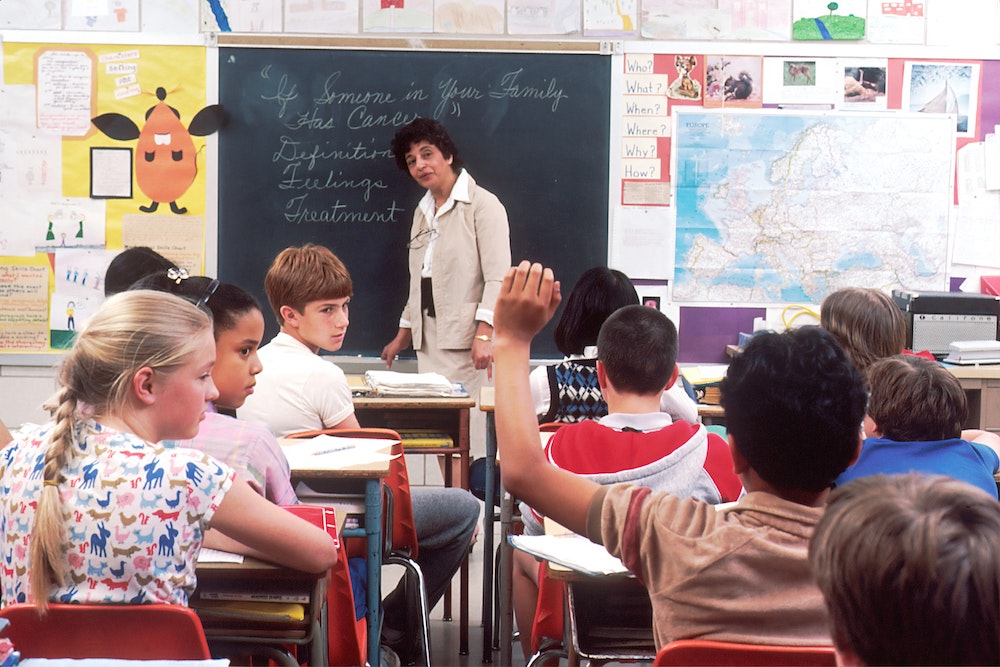What Is A Brain Break And Should Students Be Taking Them?
Do students need a brain break during lessons or instruction? Let's look at some choices out there right now.

Imagine for a moment you are a teacher at any grade level. Or imagine you are a parent homeschooling your child. Either way, you are well into whatever the lesson of the moment is, and your students have been working hard (or your child) for the past 15-20 minutes and now the fidgeting has begun. They are wiggling around in their seats or giving you a blank stare, and you may even hear a frustrated sigh or two. These are sure-fire signs that your students have hit their limit. You need to get the class back on track, but recess is still a couple of hours off. It is time for a brain break.
WHAT IS A BRAIN BREAK?
A brain break is pretty much what the name implies. Giving one’s brain a break. As it pertains to school, this would be giving students a break from the rigors of learning. A brain break is a certain type of activity that takes students away from the mental work and allows their brains to reset. A brain break will relieve the stress of learning and allow the brain to relax.
Brain breaks are meant to be short in nature. Think of them as 3–5 minute pauses, but they are not intended for students to just sit at their desk and look around. These brain breaks can be physical in movement and they can also be mental breaks as well. Whichever way you go with them (we’ll discuss examples in a bit), they are designed to be quick and easy, just long enough to relax the brain, reset your student’s minds, and get them happily prepared to begin learning again.
WHY SHOULD STUDENTS TAKE BRAIN BREAKS?

Think of it like this – the brain is a powerful computer, one that needs time to process the information it has been fed. If you understand that your body only has a certain amount of stamina to get you through a run or a hike, then you also understand that the brain only has a certain amount of mental stamina to get you through learning sessions or projects. A brain break is a perfect way to get students refreshed and ready to go.
As a teacher, you probably hate the thought of disrupting the class to take a brain break. You know there is a ton of material that needs to be taught and every minute away from teaching it only puts the classroom further behind. But what good is it if your students are tuning you out? You may find that you are spending more time reteaching a specific item than you should be, thusly putting you in a worse situation.
It may sound harsh to some, but today’s students are not built like yesterday’s students. Blame it on society, blame on parenting, or blame it on the schools, but kids today are used to a fast pace. Many have attention issues just by the simple fact of the instant gratification kids get through social media and video games. Their brains, for good or for bad, are wired differently. They see things differently, they learn differently, and their patience lasts only so long.
So, if you think about it, a brain break, if worked into your daily lesson plan smartly, can actually be a benefit to the entire classroom; a win-win for teachers and students. So, what are some good examples of brain breaks? Are students the only ones who can benefit from one?
WHAT ARE THE BEST BRAIN BREAKS FOR STUDENTS?

As we mentioned, brain breaks should only last anywhere from 3-5 minutes. But what you should also know about a brain break is their frequency changes as kids get older. There is a general rule that teachers follow when implementing a brain break. Kids who are of elementary school age usually take their brain break after every 10 to 15 minutes of lecture. For middle schoolers and high schoolers, these times change. Older students should be taking their brain breaks after every 20-30 minutes.
There are many different variations or activities that can be used as a brain break. One of the things you may want to inquire about with your class is to ask, even before you start any type of brain break, just what they find relaxing. What do they like to do to make them feel calm? You might get a good idea or two from your students that can be implemented as a brain break.
As we said, there are many ways to go about your brain breaks. Some teachers use breathing exercises. These include flower breathing, balloon breathing, and blowing bubbles. With flower breathing you have your students breathe in through their nose, telling them to imagine they are inhaling the sweet fragrance of a flower. Then have them breathe out through their nose, making an “ahhhh” sound. Have them to this several times.
Balloon breathing is similar to flower breathing. Here students sit in a comfortable position and then start to breathe in through their noses, filling their bodies as if they were a balloon. Then they exhale slowly. Have students repeat this several times.
Article continues below headlines

The Best Type Of Butter Dish For Your Home Kitchen
The history of the butter dish is intertwined with the history of butter itself and the evolution of dining etiquette. …
Continue reading "The Best Type Of Butter Dish For Your Home Kitchen"
The post The Best Type Of Butter Dish For Your Home Kitchen appeared first on Tell Me Best.
Continue
Netflix Grisly Horror Mystery Is A Master Class In Jump Scares | GIANT FREAKIN ROBOT
I’ve recently developed a newfound appreciation for horror movies that have suspiciously short run-times, and The Autopsy of Jane Doe …Continue reading "Netflix Grisly Horror Mystery Is A Master Class In Jump Scares"
Continue
Blowing bubbles is just that. Well, there is a difference in that students don’t actually have a jar of bubbles, they imagine they have a jar of bubbles. They then pretend to open the jar and take the wand out. They dip the wand in the bubbles and draw a deep breath. What you want students to do is blow out slowly like they are creating a large bubble. The slower the better. These are just a few examples of relaxation brain breaks, but there are others one can use too.
Of course, a brain break does not always have to be the meditative type. While those are key in getting kids to chew up and spit out their stress, there are physical brain breaks that can be just as effective. This physical brain breaks can come in many different forms and they are designed to not only offer relief to your student’s brain, but they can also be quite fun.
One such fun brain break activity is called 5-4-3-2-1. In this activity, the teacher will have students stand while the teacher calls out activities for the students to perform. For instance, the teacher can call out, “Do five arm rolls, four jumping jacks, spin around three times, hop on your foot two times, and walk around the entire classroom one time.” Simple, active, but the brain is relaxing.
Another fun brain break is called Trading Places. Here students will stand behind their chairs. The teacher will then call out a simple trait, such as “everyone with braided hair,” or “all students who ate breakfast,” or even “all students wearing a black shirt.” Everyone with the trait the teacher calls out must change places.
One more fun brain break is called “Mingle, mingle, group.” The way this one works is students start to move around the classroom. As they do, they are saying in a very soft voice, “mingle, mingle, mingle.” They continue to do this until the teacher calls out, “Group of four!” Then kids must quickly get into groups with the correct number the teacher called out. Students who can’t get into a group fast enough must do three jumping jacks (or whatever number the teacher decides on).
Maybe dancing is the brain break students will like. A simple idea there is called Freeze Dance. Here the teacher will put on some good rockin’ music and when the teacher turns off the music, students must freeze in that position until the music begins again. You can see something similar called the “Move and Freeze” song below.
Of course, how you choose your brain break is based specifically on the age of your students. What you decide to do with first-grade students will probably be much different than what you do with middle school students and high school students. You can find some great ideas here.
ARE STUDENTS THE ONLY ONES WHO NEED THEM?
While most of our concern revolves around our children, adults oftentimes find stress catching up to them as well. Employing strategic brain breaks for adults can be quite beneficial to their mental and physical health. Some great choices include meditation, getting out for a walk, stretches, and even laughing out loud. Any type of short activity that calms the mind and eases the stress will work.
FINALLY
Not only has research shown that brain breaks work for kids, but it also shows they are a great tool for adults. These short breaks help students relax, refresh, and recharge. They bring back the attention kids need to return to learning, they are motivating, and they return energy levels back to normal. Good planning can make for a winning classroom and students who become eager to learn. So, teachers and parents, while you are putting together your daily lesson plan, be sure to include a decent number of brain breaks. Your students will appreciate it, as will you.







